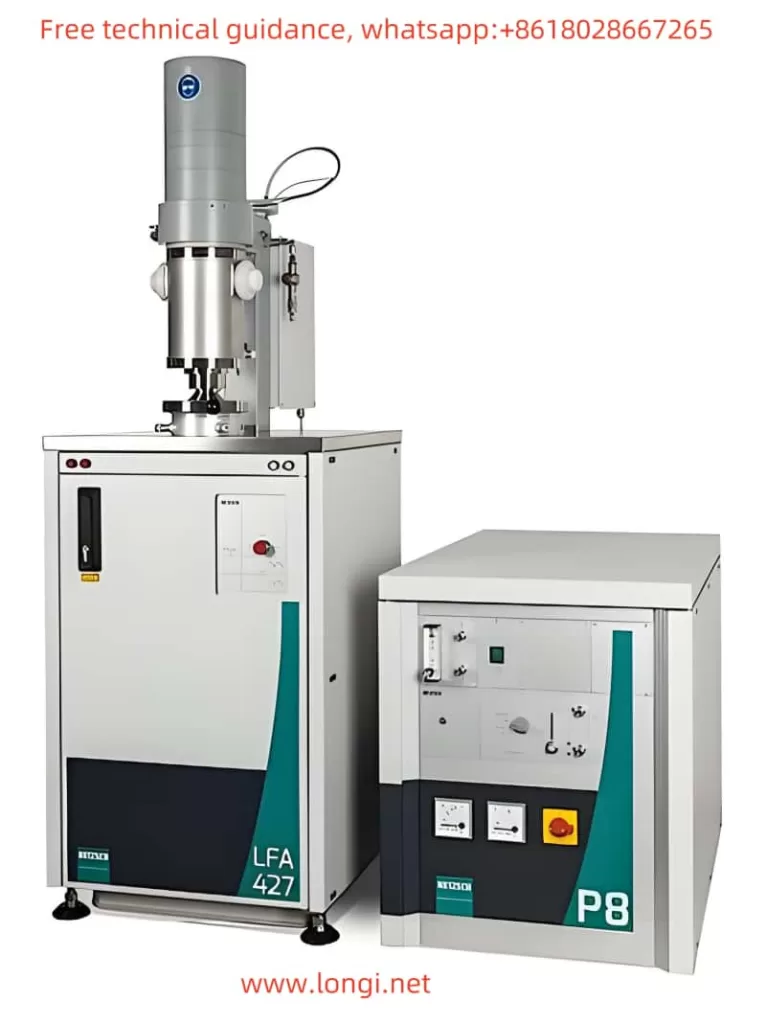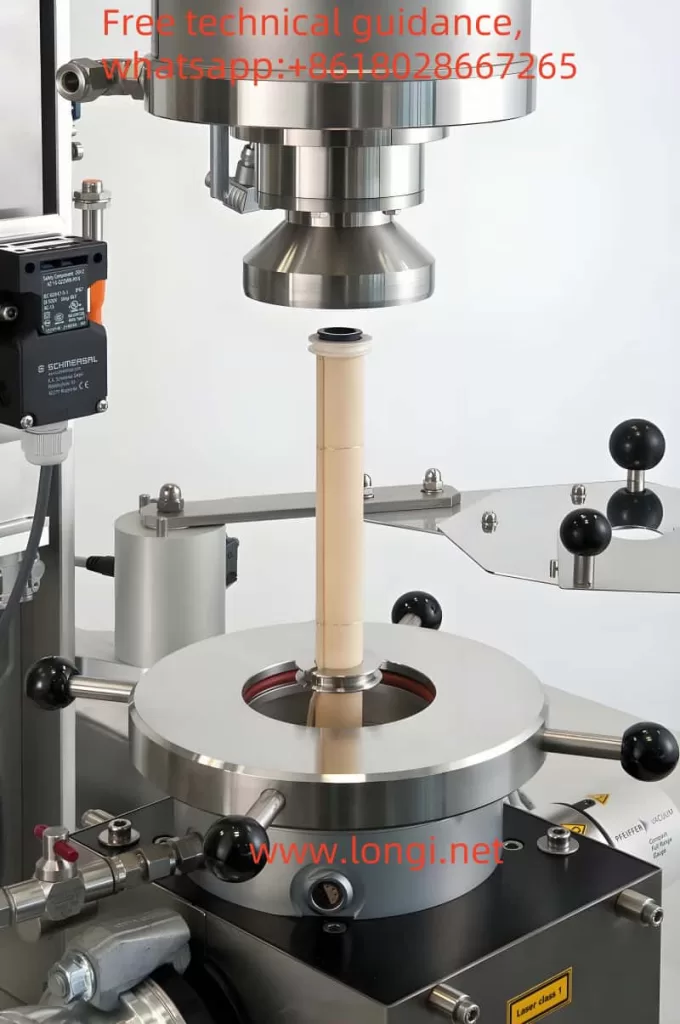Introduction
With the increasing demand for materials’ thermal properties in industrial and research fields, laser thermal diffusivity measurement instruments have become indispensable tools for researchers and engineers. The LFA 427 series laser thermal diffusivity measurement instrument, developed by NETZSCH, a German company, is one of the most advanced devices on the market. It is widely used for thermal diffusivity measurements of metals, ceramics, plastics, and other materials. This article will provide a detailed guide to the operation of the LFA 427 series, based on its user manual, covering its principles, features, usage methods, and troubleshooting approaches, to help users effectively operate this device.

Principles and Features of the LFA 427 Series
Principle:
The LFA 427 series uses the Laser Flash Analysis (LFA) method for thermal diffusivity measurement. In this method, a short laser pulse is directed at the surface of the sample, causing rapid heating, which generates a thermal wave that propagates through the material. The temperature change on the opposite side of the sample is measured over time, allowing the thermal diffusivity to be calculated. This method is highly accurate and sensitive, making it suitable for a wide range of materials.
Features:
- High Precision and Stability: The LFA 427 series uses advanced sensor technology, providing precise measurements down to the micro-watt level, making it suitable for measuring extremely thin or small samples.
- Wide Application Range: Whether for high thermal conductivity metals, low conductivity ceramics, or complex composite materials, the LFA 427 can effectively measure their thermal diffusivity.
- Fast Response: With its rapid data collection and processing capabilities, the instrument can provide accurate results in a short amount of time.
- Automation: The LFA 427 series features an advanced automation system that allows users to easily set test parameters and monitor the test process through a computer interface, reducing human error.

How to Use the LFA 427 Series and Precautions
Usage Instructions:
- Instrument Setup: Place the LFA 427 on a stable workbench, ensuring the instrument is level to prevent external vibrations from affecting the measurement results.
- Sample Preparation: The sample surface should be smooth and uniform, free from bubbles, cracks, or irregularities. The sample’s thickness and weight must meet specific requirements.
- Instrument Settings: Connect the instrument to a computer and start the LFA 427 software. Set appropriate parameters, such as laser pulse energy and measurement time, based on the sample type. Select the correct measurement mode (single-sided or double-sided measurement).
- Measurement Process: Once the measurement starts, the instrument will automatically collect data and analyze it. Users can view the test results in real-time through the software interface.
Precautions:
- Environmental Conditions: The measurement environment should be free from extreme temperatures, high humidity, or strong electromagnetic interference to ensure accurate results.
- Sample Quality: The sample surface must be flat to ensure even laser exposure and accurate temperature response.
- Calibration and Maintenance: It is recommended to calibrate the instrument before each use to ensure measurement accuracy. Additionally, regularly clean the sensors and laser emitters to maintain optimal performance.
Fault Analysis and Troubleshooting Methods
Common Faults and Symptoms:
- Display Errors or No Display: The instrument does not display data or shows abnormal readings after startup.
- Unstable or Inaccurate Measurements: Measurement results fluctuate significantly or show noticeable deviation even under the same conditions.
- Instrument Won’t Start: The power is on, but the instrument does not start, and no display appears.
Fault Cause Analysis:
- Power Supply Issues: There could be loose connections or poor contact in the power supply line, preventing the instrument from starting.
- Temperature Sensor Malfunction: If the sensor is faulty, measurement results may be unstable or inaccurate.
- Environmental Interference: Strong electromagnetic interference or unstable temperature and humidity in the measurement environment may affect the accuracy of the results.
- Software Problems: Incorrect software settings or compatibility issues with the hardware could cause abnormal data collection.
Troubleshooting Methods:
- Check Power Connections: Ensure the power cable and socket are properly connected. Try using a different power cable or socket.
- Inspect and Replace Sensors: Regularly check the sensors for dirt or damage, and replace them if necessary.
- Optimize the Environment: Ensure the test area is stable, free from external vibrations, and maintains consistent temperature and humidity. Avoid operating in areas with strong electromagnetic noise.
- Software Updates and Reconfiguration: Ensure that the software is up to date, and recalibrate the instrument to rule out software configuration issues.
Conclusion
The NETZSCH LFA 427 series laser thermal diffusivity measurement instrument is a powerful tool for measuring the thermal properties of materials, offering high precision, stability, and versatility. By following proper operating procedures and performing regular maintenance, users can fully leverage its capabilities to obtain reliable data for research and industrial applications. It is essential to pay attention to sample preparation, environmental control, and instrument calibration to ensure accurate results. Additionally, being familiar with common faults and troubleshooting methods will help users efficiently resolve issues and extend the instrument’s lifespan.
